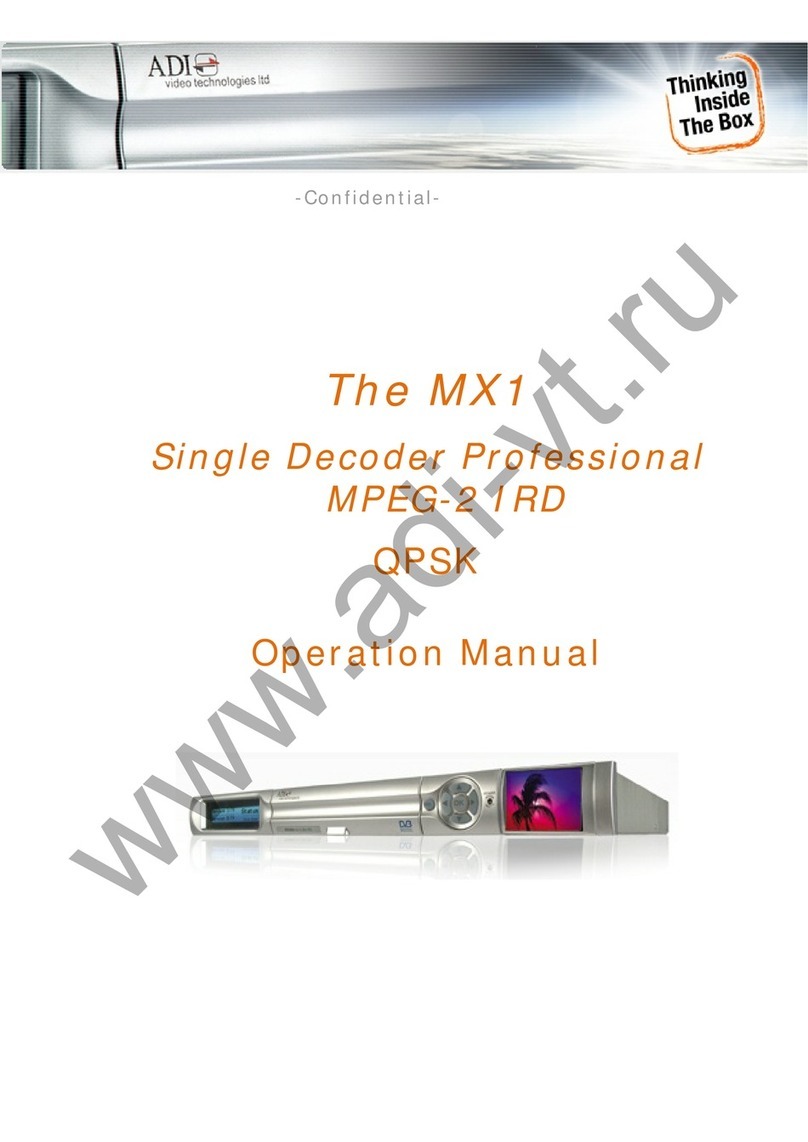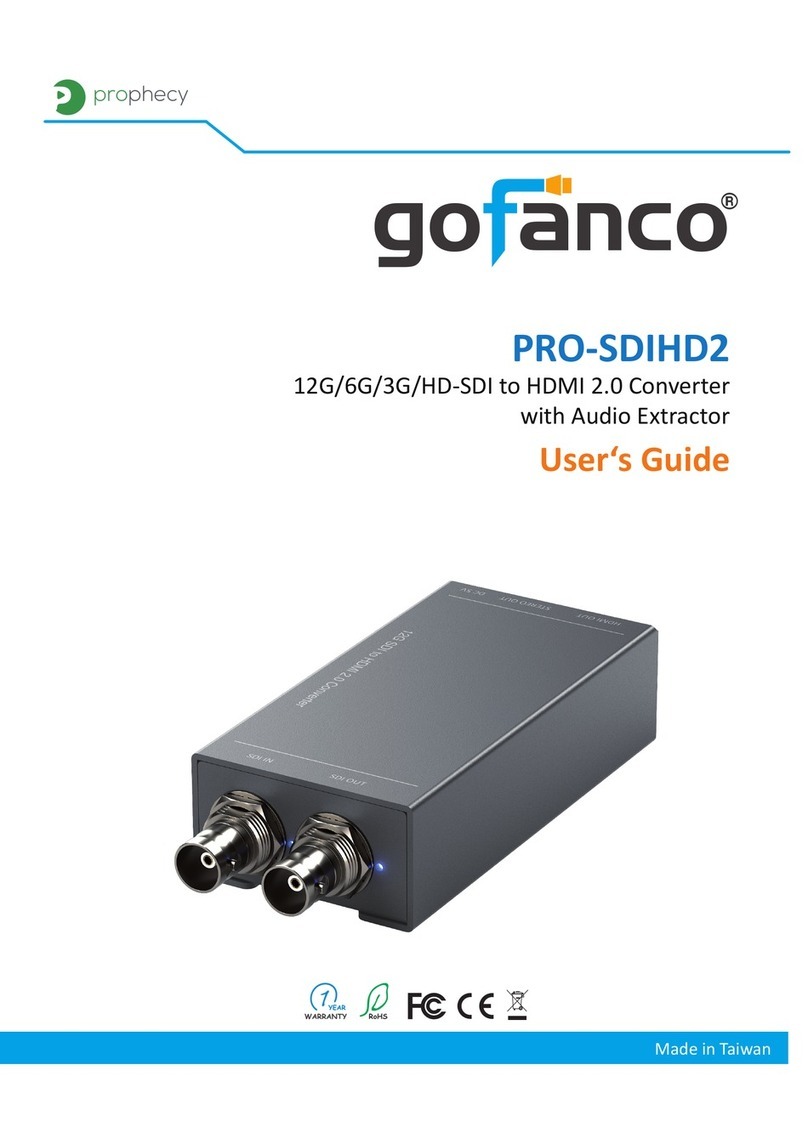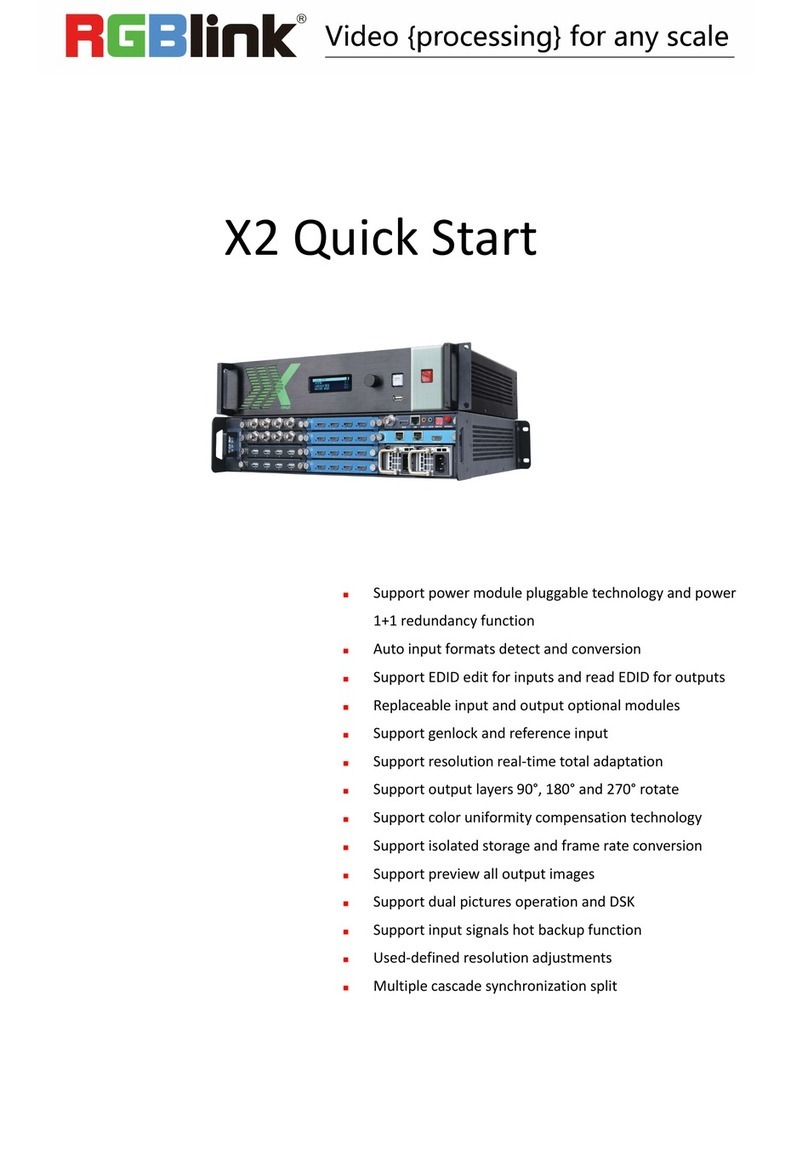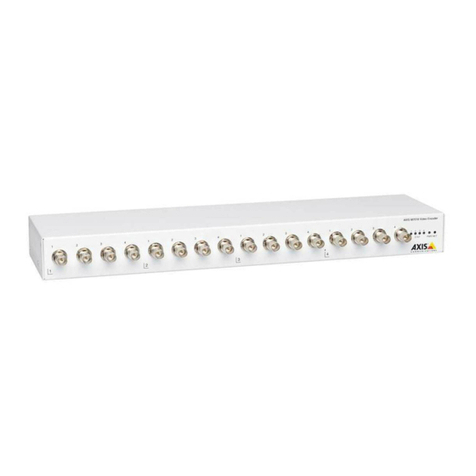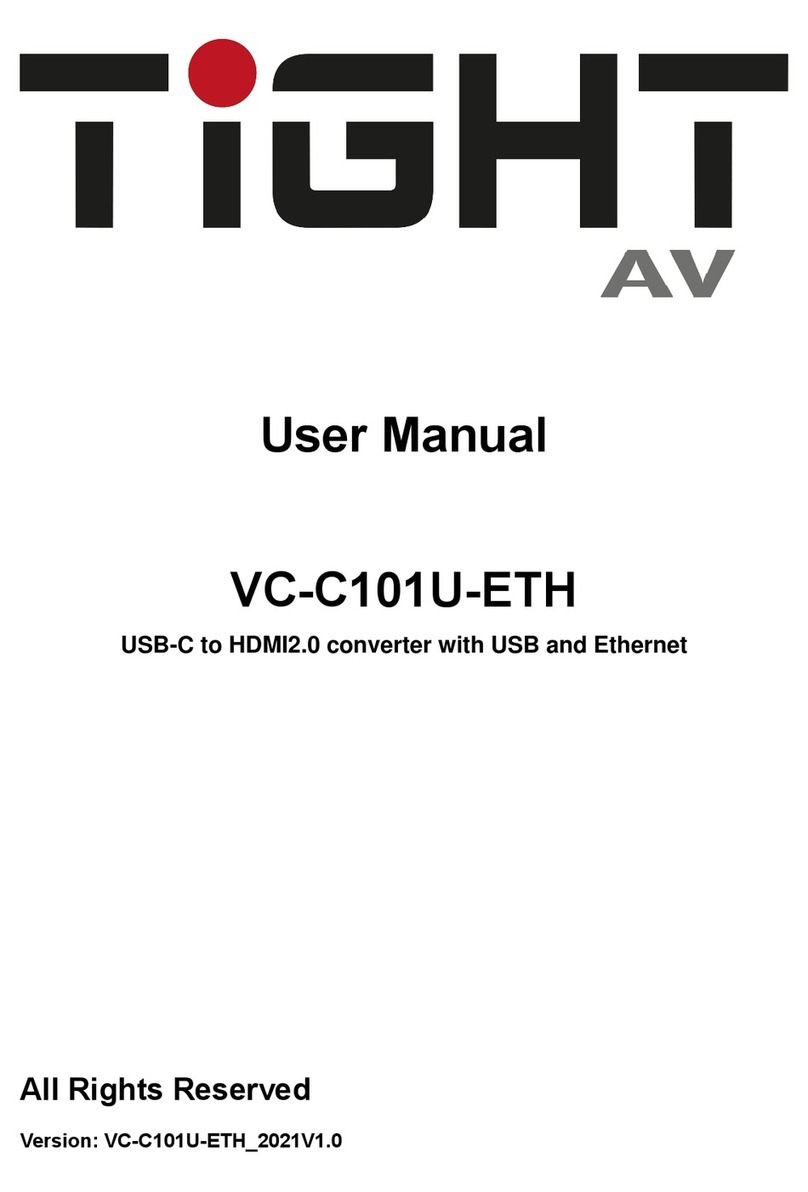ADI Video Technologies MX1 User manual

MX1 Single Channel MPEG-2 IRD
Operation Manual

Thank you for purchasing the MX1 Single MPEG-2 IRD.
This manual has been written to provide all relevant instructions for operating your MX1 Single MPEG-2
IRD. We recommend that you read these instructions before attempting to install or operate your MX1 to
ensure the maximum benefit to your customers.
A.D.I. Video Technologies Ltd. believes the information contained in this publication is accurate as of its
latest printing date and reserves the right to make changes in specifications and information without prior
notice. A.D.I. Video Technologies is not responsible for any inadvertent errors.
The terms and conditions governing the sales of A.D.I. Video Technologies products and the licensing and
use of software consist solely of those set forth in the contracts between A.D.I. Video Technologies and its
customers. No representation or other affirmation of fact contained in this publication, including but not
limited to statements regarding capacity, response time performance, suitability for use or performance of
products described herein shall be deemed to be a warranty by A.D.I. Video Technologies for any purpose
or give rise to any liability by A.D.I. Video Technologies whatsoever.
In no event shall A.D.I. Video Technologies be liable for any incidental, indirect, or consequential damages
whatsoever (including but not limited to loss of profits) arising out of or relating to this publication or the
information contained in it, even if A.D.I. Video Technologies has been advised, knew, or should have
known of the possibility of such damages.
The products described in this document are confidential and proprietary of A.D.I. Video Technologies or
its licensors.
No part of his document may be reproduced in any form, including by electronic retrieval systems,
without prior written permission of A.D.I. Video Technologies.
©Copyright 2005 by A.D.I. Video Technologies, Ltd.
All rights reserved.

MX1 Single Channel MPEG 2 Decoder Operation Manual i
Table of Contents
About this Manual ............................................................................. iii
Organization of this Manual ................................................................... iii
Conventions Used in this Manual ............................................................ iii
Chapter 1 Introduction...................................................................................... 1
Front and Rear Panels............................................................................3
Front Panel .........................................................................................................3
Powering up the MX1.............................................................................5
The Menu System .................................................................................6
Controlling the Menu ............................................................................................6
Getting Started....................................................................................................7
Chapter 2 Configuring the Input TS ................................................................... 9
Configuring QPSK1 or QPSK2 Input TS .....................................................9
Configuring the IP Input TS ..................................................................11
Viewing the ASI 1 or ASI 2 Input TS ......................................................12
Chapter 3 Configuring the Decoder Parameters ................................................13
Configuring the Decoder Input ..............................................................14
Configuring the Decoder Work Mode ......................................................14
Configuring the Decoder Service Mode..................................................................15
Configuring the Decoder PIDs Mode .....................................................................16
Configuring the Decoder Video Parameters .............................................16
Configuring the Decoder Display............................................................18
Configuring the Decoder Output Format................................................................18
Configuring the Decoder VBI Functions.................................................................19
Configuring the Decoder Audio..............................................................20
Chapter 4 Configuring the Output TS ................................................................23
Configuring the Output TS_OUT_2.........................................................23
Configuring the TS_OUT_2 CAM Parameters..........................................................24
Configuring the IP Out .........................................................................25
Configuring the Low Speed Data (RS-232)..............................................25
Chapter 5 Configuring the CA System ...............................................................27
Configuring the CAM 1 or CAM 2............................................................27

ii MX1 Single Channel MPEG 2 Decoder Operation Manual
Configuring the MCD ........................................................................... 29
Enabling or Disabling MCD .................................................................................. 29
Configuring MCD Slot 1 ...................................................................................... 29
To configure the BISS parameters:........................................................ 30
Chapter 6 Viewing the MX1 Status ................................................................... 31
Viewing Alarms................................................................................... 31
Viewing Inputs ................................................................................... 32
Viewing the QPSK1 or QPSK2 Inputs.................................................................... 32
Viewing the ASI 1 or ASI 2 Inputs........................................................................ 34
Chapter 7 Viewing the Unit Configuration ........................................................ 35
Chapter 8 Viewing and Configuring the Communication Settings......................37
Viewing the Serial Settings................................................................... 37
Configuring the Network Settings.......................................................... 38
Chapter 9 Configuring Additional Setups .......................................................... 39
Configuring the DVB Input Bit Rate........................................................ 39
Enabling or Disabling High Jitter............................................................ 39
Glossary........................................................................................... 41

MX1 Single Channel MPEG 2 Decoder Operation Manual iii
About this Manual
This manual contains instructions on the minimum hardware configuration of the MX1.
Where applicable, the additional options for the maximum configuration are indicated.
This manual describes the operation of the MX1 through the LCD screen.
Organization of this Manual
Introduction. This chapter describes the hardware interfaces of the MX1 and the
front and rear panels. It also includes a description of and instructions for working
with the menu system.
Configuring the Input TS. This chapter contains instructions for configuring the
input TS parameters included in the Input Menu.
Configuring the Decoder Parameters. This chapter contains instructions for
configuring the decoder parameters included in the Decoder Menu.
Configuring the Output TS. This chapter contains instructions for configuring the
output TS parameters included in the Output Menu.
Configuring the CA System. This chapter contains instructions for configuring the
Conditional Access system parameters included in the CA System Menu.
Viewing the MX1 Status. This chapter contains instructions for viewing the status of
the MX1 through the Status Menu.
Viewing the Unit Configuration. This chapter contains instructions for viewing the
current configuration of the MX1 through the Unit Config Menu.
Viewing and Configuring the Communication Settings. This chapter contains
instructions for viewing and configuring the settings of the various communication
ports through the Comm Settings Menu.
Configuring Additional Setups. This chapter contains instructions for configuring
additional parameters such as input bit rate and high jitter.
Glossary. The glossary lists and explains the terms and acronyms used throughout
this manual.
Conventions Used in this Manual
Indicates a note.


MX1 Single Channel MPEG 2 Decoder Operation Manual 1
1
Introduction
The MX1 Single MPEG-2 integrated receiver decoder is designed to reduce cost and
satisfy video, audio, and data requirements of digital broadcast television, cable and
satellite operations.
The MX1 integrated receiver decoder is a fully interoperable decoder for digital media
networks that complies fully with the DVB MPEG-2 standard. It decodes program
services provided by up to four selected transport stream inputs.
The decoder supports a large number of applications. Inputs come from the following
sources:
Satellite – QPSK
DVB/ASI
Outputs include the following:
Analog video
Analog audio
Embedded SDI & Non Embedded SDI
AES/EBU
ASI

2 MX1 Single Channel MPEG 2 Decoder Operation Manual
Figure 1 illustrates MX1 applications.
Legend:
LSD Low speed data over RS-232
HSD High speed data over RS-422
Other abbreviations See the Glossary on page 41
Figure 1: MX1 Applications
The decoder supports full transport stream (TS) decryption and is compatible with all
conditional access (CA) modules. Depending on the hardware configuration, the
decoder can also provide embedded CA.
Two slots for Conditional Access Modules (CAM) are provided in the front panel to
enable decryption of received signals and transmission of the signals in the clear to
customers. Depending on the hardware configuration, additional slots are provided in
the rear for the insertion of smart cards (SC) used for the embedded decryption
function.
Other applications of the decoder include the following:
Program Identification (PID) filtering and retransmission
Digital Turnaround (DTA) and video monitoring
Control and monitoring through IP.
In remote mode, all decoder functions can be operated remotely from a PC under
MS-WINDOWS through the IP interface.
In addition to an RS232 or RS422 communication port, the MX1 can provide a General
Purpose Interface (GPI) via a 9-pin D-type connector that allows dry contact alarms.
The GPI depends on the hardware configuration.
In local mode, all decoder functions can be operated through a two-line LCD window
and six buttons on the front panel.

MX1 Single Channel MPEG 2 Decoder Operation Manual 3
Front and Rear Panels
The front panel provides the means to locally configure the MX1. The rear panel
provides the electrical and communications interfaces.
Front Panel
The front panel contains a two-line LCD window and six control buttons, which are
used to configure the MX1.
Figure 3: MX1Front Panel
The LCD window displays two lines of a selected window. The ▲and ▼buttons are
used to scroll through the window. The ▲, ▼, ►,and ◄buttons are used to select
menu entries viewed through the LCD window. The ENTER button is used to save new
configurations during an edit session, while the ESC button is used to discard new
configurations.
The front panel provides two ports for the Conditional Access Modules (CAM), CAM 1
and CAM 2.
The Status LED provides status information for the MX1, as described in Table 1.
Table 1: Status LED Indications
Appearance Significance
Dark Power off
Blinking Green Power up self test
Green Operational state
Orange Alarm
Red Error

4 MX1 Single Channel MPEG 2 Decoder Operation Manual
The rear panel contains the power connector, power switch, and communications
connectors for the MX1 hardware configuration, which may vary according to
configuration.
Figure 4: Rear Panel
XLR Cable Wiring
Figure 5: Rear Panel 9-Pin D-Type to XLR Connector
If you connect a computer to MX1 Serial Port 1 or 2, you must configure the computer
port to the settings listed in Table 2.
Table 2: Serial Line Connection Requirements
Serial Line Parameter Required Setting for Connected Computer
Baud Rate 115200
Parity None
Data Bits 8

MX1 Single Channel MPEG 2 Decoder Operation Manual 5
Serial Line Parameter Required Setting for Connected Computer
Stop Bits 1
Flow Control Xon/Xoff
To use the Ethernet port, you must configure the IP address and mask for both your
computer and the MX1. For information on configuring the IP address and mask, refer
to Configuring the Network Settings on page 38.
Features in the Full Feature Hardware Configuration
When the MX1 contains the maximum configuration, four additional BNC connectors
can accommodate more input TSs, which can be four QPSK sources.
The maximum hardware configuration includes the following features:
Two Video – Composite
Two SDIs with embedded audio or SDI without Embedded Audio
Two Audio – Stereo, AES/EBU
Inputs — One QPSK, two ASI, one IP
Outputs — Two ASI, one A/V channels
Computer Communication – 1 RS232, 1 RS422
Powering up the MX1
To power up the MX1, connect the power to the AC main and turn on the power switch.
Figure 6 shows the power connector and switch on the rear panel of the MX1.
Figure 6: Power Connector and Switch
To verify correct performance, observe the changes in the Status LED on the front
panel (Figure 3). Refer to Table 1 for an explanation of the status indications in the
Status LED.
During power up, the Power Up Menu is displayed in the LCD Window for five seconds.
After five seconds, the first two lines of the Main Menu are displayed. For more
information refer to Getting Started on page 7.

6 MX1 Single Channel MPEG 2 Decoder Operation Manual
The Menu System
This section describes the MX1 menu.
The menu is organized hierarchically as illustrated in Figure 8.
Each rectangle represents a menu.
Figure 8: Menu System
Controlling the Menu
The MX1 is configured through the front panel buttons. The following six buttons are
used to navigate the menu system and configure available parameters:
▼scrolls downward through a menu. In edit mode, it is used to edit values.
▲scrolls upward through a menu. In edit mode, it is used to edit values.
►enters submenus or edit mode. In edit mode, it moves the cursor to the right
column.
◄moves the cursor one position to the left in edit mode.
ENTER enters into a submenu. If there is no submenu, pressing ENTER saves your
changes, exits the current menu, and enters the next higher menu.
ESC exits from a menu without saving information. In submenus, pressing ESC
enters a higher menu.

MX1 Single Channel MPEG 2 Decoder Operation Manual 7
The LCD window shows only two consecutive lines of a selected menu. A blinking
rectangle █indicates the position in the cursor.
The Main Menu and lower submenus contain options you can select using the buttons.
Menus at the bottom of the hierarchy contain information that you can edit by using
the arrow buttons. Data is displayed in some of the menus. Brackets in a menu
indicate whether the data can be modified. The following types of brackets are used:
{ } – data cannot be modified
< > – data can be modified
Getting Started
After the MX1 powers up, the first two lines of the Main Menu appear. Figure 10
illustrates the Main Menu screen.
Figure 10: Main Menu Screen
To view the rest of the menu, use the scroll buttons. Figure 12 illustrates the full Main
Menu.
Input
Decoder
Output
CA System
Status
Unit Config
Comm Settings
Additional Setups
Figure 12: Full Main Menu
Table 3 lists the references in this manual for instructions on configuring the Main
Menu options.
Table 3: Reference Table for Main Menu Option Configuration
Main Menu Option Refer To
Input Configuring the Input TS on page 9
Decoder Configuring the Decoder Parameters on page 13
Output Configuring the Output TS on page 23

8 MX1 Single Channel MPEG 2 Decoder Operation Manual
Main Menu Option Refer To
CA System Configuring the CA System on page 27
Status Viewing the MX1 Status on page 31
Unit Config Viewing the Unit Configuration on page 35
Comm Settings Viewing and Configuring the Communication Settings
on page 37
Additional Setups Configuring Additional Setups on page 39

MX1 Single Channel MPEG 2 Decoder Operation Manual 9
2
Configuring the Input TS
The Input Menu allows configuration of the QPSK parameters and shows the status of
the ASI input transport streams (TSs).
To access the Input Menu, select Input from the Main Menu. Figure 14 illustrates the
Input Menu screen.
Figure14: Input Menu Screen
To view the rest of the menu, use the scroll buttons. Figure 16 illustrates the full Input
Menu.
QPSK1 { SYNC ON}
QPSK2 { SYNC ON}
ASI 1 { SYNC ON}
ASI 2 { SYNC ON}
IP { SYNC ON}
Figure 16: Full Input Menu
Configuring QPSK1 or QPSK2 Input TS
To configure parameters for a QPSK1 or QPSK2 TS input stream:
1. To configure QPSK1 parameters, select Input > QPSK1.
To configure QPSK2 parameters, select Input > QPSK2.
The QPSK Input Menu screen appears.

10 MX1 Single Channel MPEG 2 Decoder Operation Manual
Figure18: QPSK Input Menu Screen
To view the rest of the menu, use the scroll buttons.
Frequency <12245.00>
LNB Freq <10600>
Sym Rate <27500>
FEC <2/3>
Polarity <Horizontal>
22 KHz <ON>
Figure19: Full QPSK Input Menu
2. Scroll to the parameter you wish to configure and press ►to move the cursor to the
right column.
3. To edit the parameter:
Press ►to move right one number or letter.
Press ◄to move left one number or letter.
Press ▲to select other values or increase a number. This depends on the
parameter.
Press ▼to select other values or decrease a number. This depends on the
parameter.
Table 5 lists the permitted values of the QPSK parameters.
Table 5: QPSK Parameter Values
Parameter Type Lower Limit Upper Limit
Kuband 10.75 GHz 12.75 GHz
Cband 3.0 GHz 4.200 GHz
Frequency
Lband .950 GHz 2.150 GHz
10.000 GHz 10.000 GHz
11.000 GHz 11.000 GHz
11.300 GHz 11.300 GHz
LBN Frequency
11.700 GHz 11.700 GHz

MX1 Single Channel MPEG 2 Decoder Operation Manual 11
Parameter Type Lower Limit Upper Limit
Universal LNB 10.600 GHz High Band
9.7500 GHz Low Band
CBand 5.150 GHz 5.150 GHz
Sym (Symbol) Rate 1 MBaud 45 MBaud
FEC 1/2, 2/3, 3/4, 5/6, 7/8, or Auto
Polarity Horizontal, Vertical, None
22 KHz ON, OFF
4. To configure additional parameters, press ◄and repeat steps 2 - 3.
5. To save your changes, press ENTER. The LCD displays the first two lines of the
Main Menu.
To discard your changes, press ESC. The LCD displays the first two lines of the Main
Menu.
Configuring the IP Input TS
To configure parameters for IP TS input stream:
1. Select Input > IP.
2. Define the PORT NUMBER.
PORT NUMBER <11111>
IP TYPE <MULTICAST>
3. Choose the IP Type: UNICAST or MULTICAST.
4. In case MULTICAST chosen you should change the MULTI IP according to
source stream unit IP.
UNI <10.10.10.10>
MULTI <225.20.20.20>
10.10.10.10 IS THE CURRENT UNIT IP ADDRESS.
225.20.20.20 IS THE SOURCE STREAM UNIT IP ADDRESS.
To edit the parameter:
Press ►to move right one number or letter.
Press ◄to move left one number or letter.
Press ▲to select other values or increase a number. This depends on the
parameter.

12 MX1 Single Channel MPEG 2 Decoder Operation Manual
Press ▼to select other values or decrease a number. This depends on the
parameter.
To save your changes, press ENTER. The LCD displays the Input TS Menu.
To discard your changes, press ESC. The LCD displays the Input TS Menu.
Viewing the ASI 1 or ASI 2 Input TS
The ASI Input Menu lists the input channels of the MX1.
The parameters in the Input Menu cannot be modified. The numbers on the left side of
the menu accompanying the inputs indicate whether the input is Input 1 or Input 2.
To view the ASI Input TS:
1. From the Main Menu, select Input > ASI 1 or ASI 2. The ASI Input Menu screen
appears.
Figure 20: ASI Input Menu Screen
Channels are listed in the ASI Input Menu only when the ASI parameter in the Input
Menu (Figure 16) has the value SYNC ON. When the ASI parameter in the Input Menu
has the value SYNC OFF, the ASI Input Menu screen displays No Services.

MX1 Single Channel MPEG 2 Decoder Operation Manual 13
3
Configuring the Decoder Parameters
The Decoder Menu displays the service and service provider name. Through the
Decoder Menu, you can configure the parameters for controlling the decoder.
The Decoder Menu appears automatically on the MX1 screen after the system is idle
for two minutes.
Figure 21 illustrates the Decoder Menu screen listing the available decoders.
To access the Decoder Menu, select Decoder from the Main Menu.
Figure21: Decoder Menu Screen
Select the decoder to view the Decoder Submenu options screen.
Figure 23 illustrates the Decoder Submenu options screen.
Figure 23: Decoder Submenu Options Screen
To view the rest of the menu, use the scroll buttons. Figure 25 illustrates the full
Decoder Submenu.
Input {QPSK}
Work Mode {Service}
Video
Display
Embedded Audio(optional)
Audio 1
Audio 2(optional)
Figure 25: Full Decoder Submenu

14 MX1 Single Channel MPEG 2 Decoder Operation Manual
Configuring the Decoder Input
The Decoder Input Menu shows the status of the input TSs and allows you to configure
the input TS for the decoder.
To configure the parameters for the Decoder Input TS:
1. From the Main Menu, select Decoder > [Decoder Name] > Input. The Decoder
Input Menu screen appears.
Figure 27: Decoder Input Menu Screen
To view the rest of the menu, use the scroll buttons. Figure 28 illustrates the full
Decoder Input Menu.
QPSK1 { SYNC ON }
QPSK2 { SYNC ON }
ASI 1 { SYNC ON }
ASI 2 { SYNC ON }
IP { SYNC ON }
CAM1 { ASI 1 }
CAM2 { QPSK1 }
Figure 28: Full Decoder Input Menu
2. Scroll to the parameter you wish to configure and press ►to move the cursor to the
right column.
3. To edit the parameter:
Press ►to move right one number or letter.
Press ◄to move left one number or letter.
Press ▲to select other values or increase a number. This depends on the
parameter.
Press ▼to select other values or decrease a number. This depends on the
parameter.
4. To configure additional parameters, press ◄and repeat steps 2 - 3.
5. To save your changes, press ENTER. The LCD displays the first two lines of the
Main Menu.
To discard your changes, press ESC. The LCD displays the first two lines of the Main
Menu.
Configuring the Decoder Work Mode
The Decoder Work Mode Menu allows you to define the service in a TS. The following is
a list of possible work modes:
Table of contents
Other ADI Video Technologies Media Converter manuals
Popular Media Converter manuals by other brands
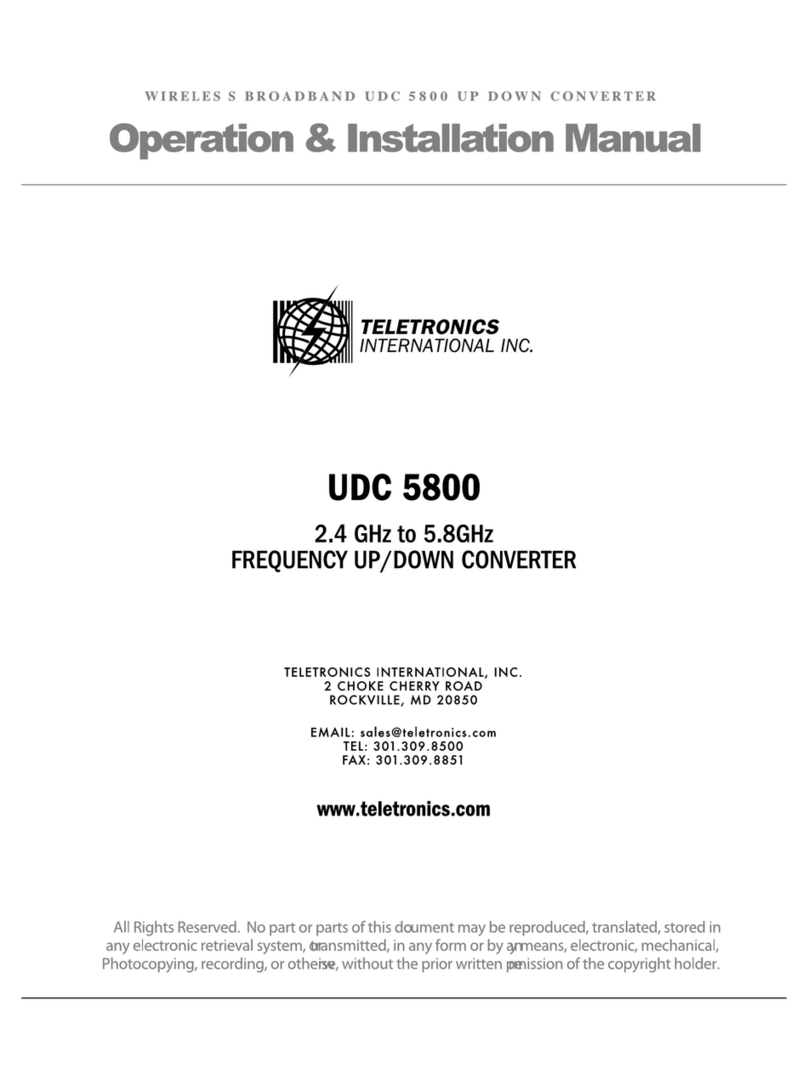
Teletronics International
Teletronics International UDC 5800 Operation & installation manual
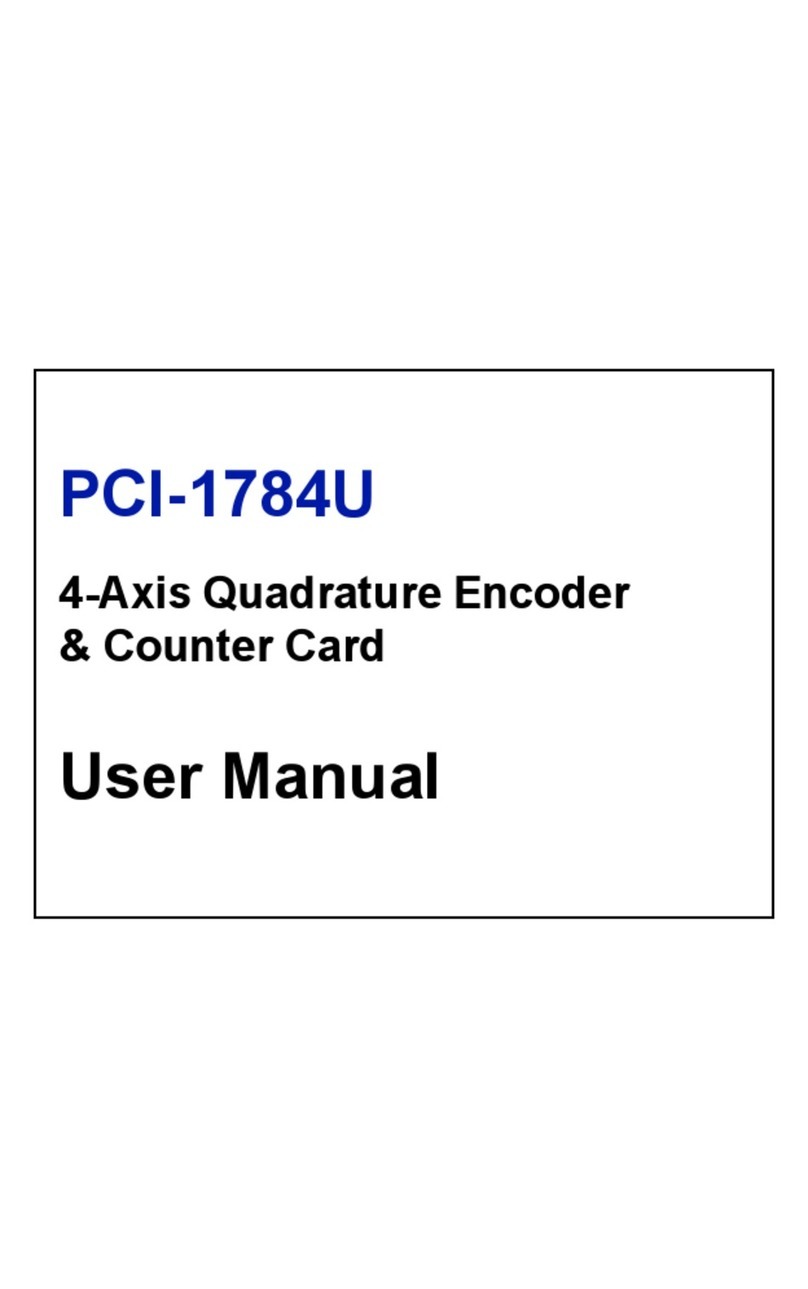
Advantech
Advantech PCI-1784U user manual
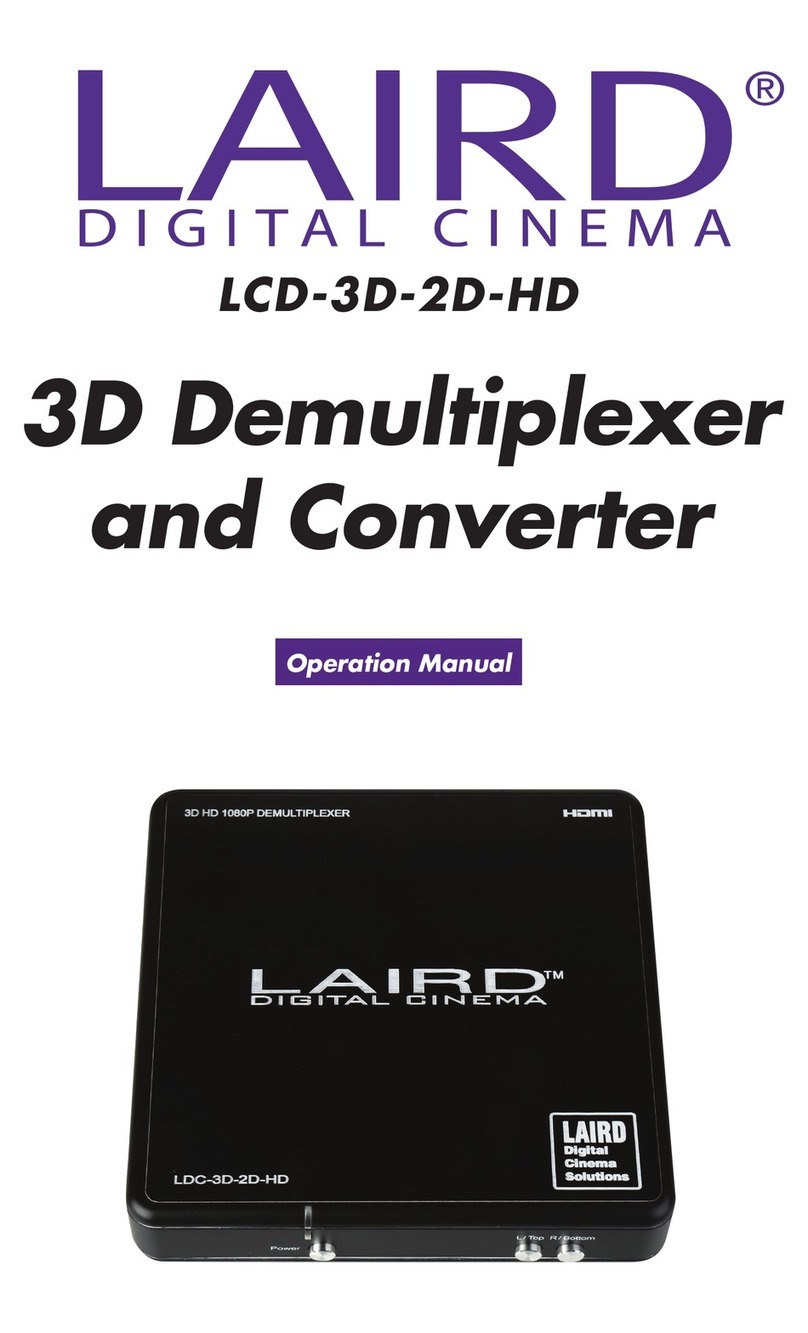
Laird
Laird LCD-3D-2D-HD Operation manual
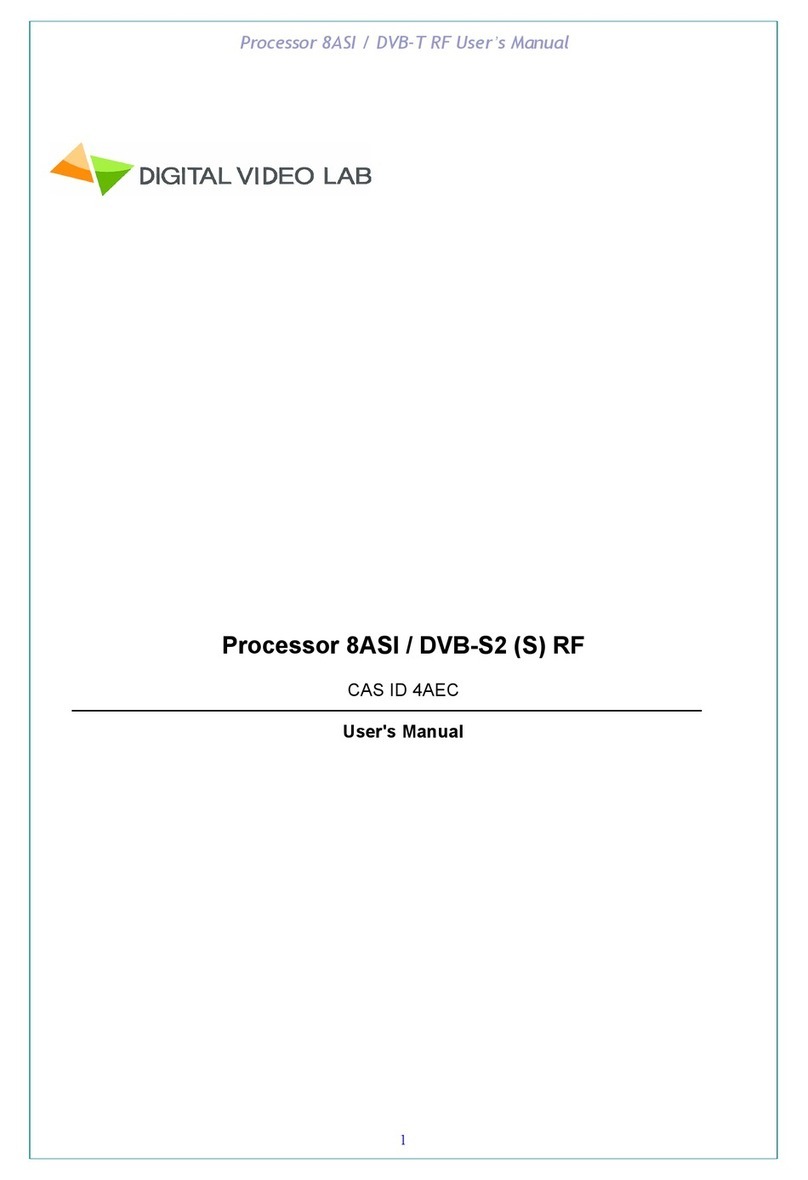
Digital Video Lab
Digital Video Lab Processor 8ASI/DVB-S2 RF user manual
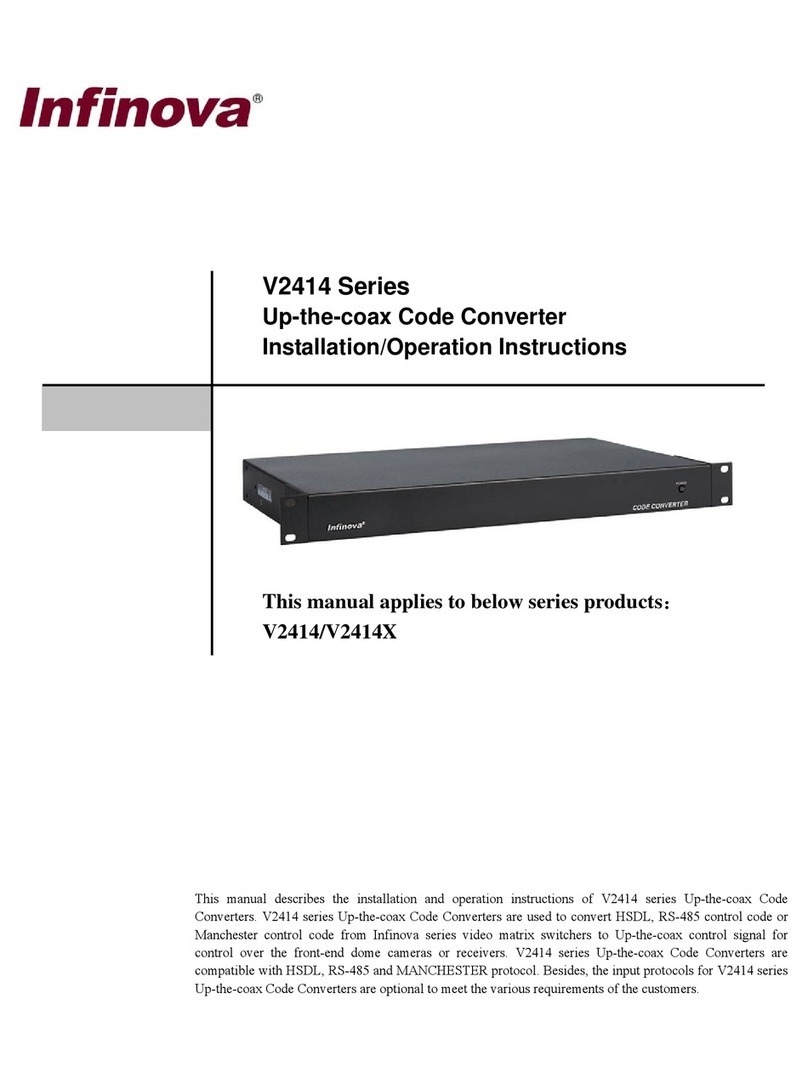
Infinova
Infinova V2414 Installation & operation instructions
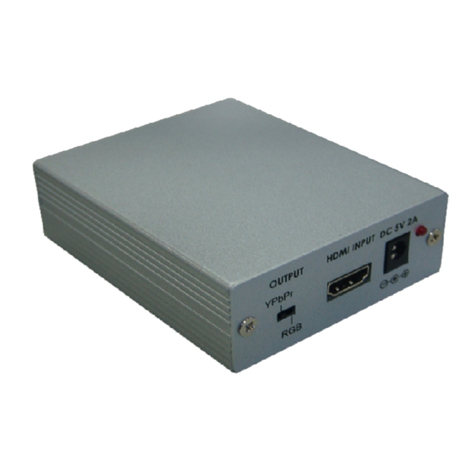
Converters.TV
Converters.TV 661 Operation manual
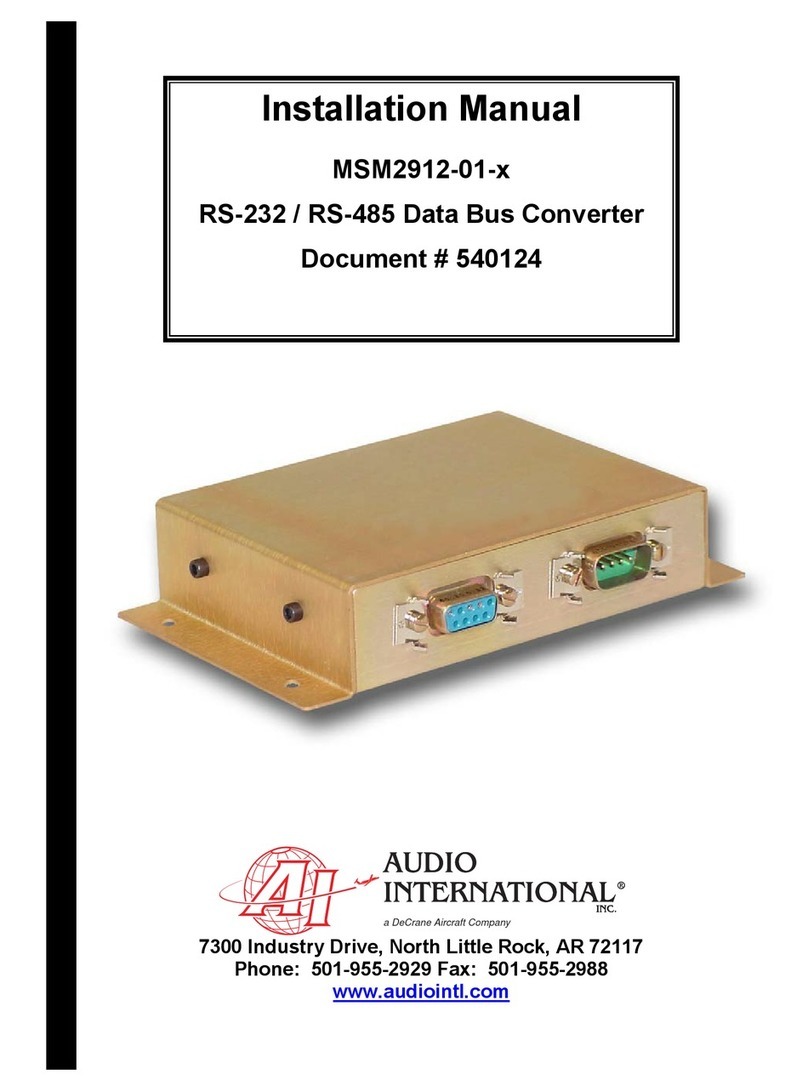
Audio international
Audio international MSM2912-01 Series installation manual
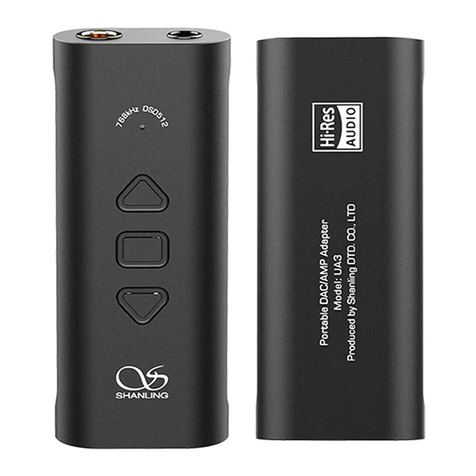
Shanling
Shanling UA3 quick start guide
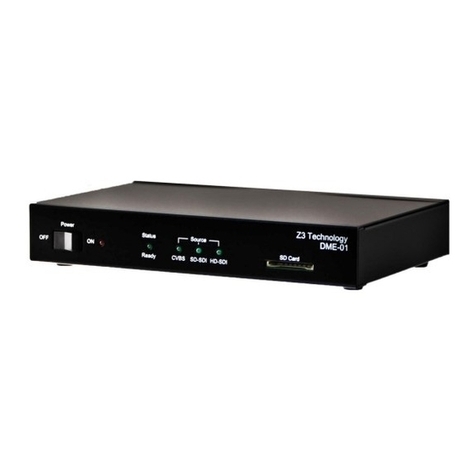
Z3 Technology
Z3 Technology Z3-DME-01 User instructions
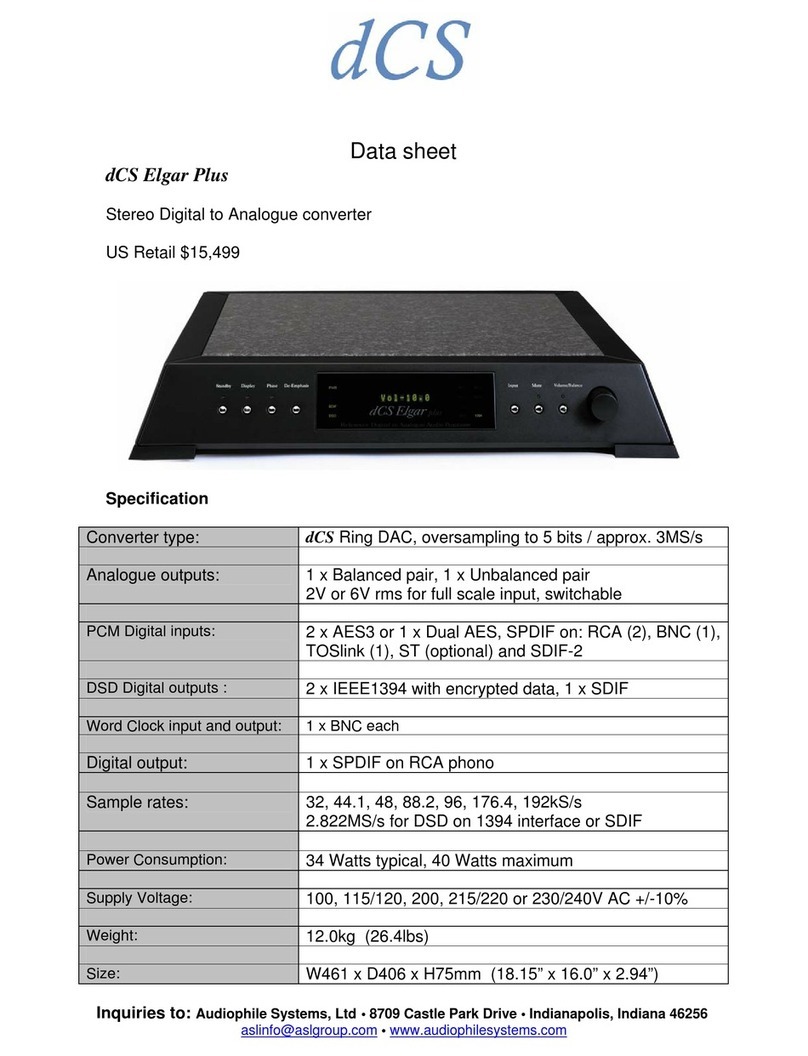
DCS
DCS Elgar Plus datasheet

Renesas
Renesas AB-050-Fx4-MB-L-Q-TCT-V2 datasheet

Schiit
Schiit True Multibit Autonomy Bifrost owner's manual
